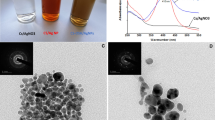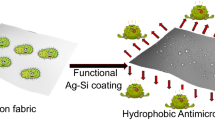Abstract
Surface treatments of textile fibers and fabrics significantly increase their performances for specific biomedical applications. Nowadays, silver is the most used antibacterial agent with a number of advantages. Among them, it is worth to note the high degree of biocompatibility, an excellent resistance to sterilization conditions, antibacterial properties with respect to different bacteria associated with a long-term of antibacterial efficiency. However, there are only a few antibacterial fibres available, mainly synthetic with high production cost and limited effectiveness. Cotton yarns with antimicrobial properties are most suitable for wound healing applications and other medical treatments thanks to their excellent moisture absorbance while synthetic based fibres are most suitable for industrial applications such as automotive tapestry and air filters. The silver-coated fibers were developed applying an innovative and low cost silver deposition technique for natural and synthetic fibers or yarns. The structure and morphology of the silver nanoclusters on the fibers was observed by scanning electron microscopy (SEM), atomic force microscopy analysis (AFM) and XRD analysis, and quantitatively confirmed by thermogravimetric analysis (TGA) measurements. Good silver coating stability has been confirmed performing several industrial washing. Antimicrobial tests with Escherichia coli were performed.








Similar content being viewed by others
References
Slawson RM, Van Dyke MI, Lee H, Trevors JT. Germanium and silver resistance, accumulation, and toxicity in microorganisms. Plasmid. 1992;27:72–9.
Zhao GJ, Stevens SE. Multiple parameters for the comprehensive evaluation of the susceptibility of Escherichia coli to the silver ion. Biometals. 1998;11:27–32.
Joeger TK, Joeger R, Olsson E, Granqvist CG. Bacteria as workers in the living factory: metal-accumulating bacteria and their potential for materials science. Trades in Biotechnology. 2001;19:15–20.
Alcamo IE. Fundamentals of microbiology. CA: The Benjamin/Cummings Publishing Company, Inc; 1991. p. 61, 748.
M. Potenza, G. Levinsons, AIM 59 (2004).
Inoue Y, Kanzaki Y. The mechanism of antibacterial activity of silver-loaded zeolite. J Inorg Biochem. 1997;67:377.
Schierholz JM, Lucas LJ, Rump A, Pulverer G. Silver coating of medical devicesa review. J Hosp Infect. 1998;40:257–62.
Schierholz JM, Beuth J, Pulverer G. Silver coating of medical devices for catheter-associated infections? Am J Med. 1999;107:101–2.
Bosetti M, Masse A, Tobin E, Cannas M. Silver coated materials for external fixation devices: in vitro biocompatibility and genotoxicity. Biomaterials. 2002;23:887–92.
Hillyer JF, Albrecht RM. Gastrointestinal persorption and tissue distribution of differently sized colloidal gold nano. J Pharm Soc. 2001;90:1927–36.
Sannino A, Pollini M, Maffezzoli A, Licciulli A. Antibacterial surface treatments based on silver clusters deposition. EP20050850988 (2008-11-05).
Blowes PG, Taylor AJ, RobertsG, Wood F. Substrates with biocidal properties and process for making them WO2000GB00604 20000221 (2000-08-24).
Yuranova T, Rincon AG, Bozzi A, Parra S, Pulgarin C, Albers P, et al. Antibacterial textiles prepared by RF-plasma and vacuum-UV mediated deposition of silver. J Photochem Photobiol A Chem. 2003;161(1):27–34.
Gaddy GA, Mclain JL, Steigerwalt ES, Broughton R, Slaten BL, Mills G. Photogeneration of silver particles in PVA fibers and films. J Cluster Sci. 2001;12(3):457–71.
Yan J, Soh KL, Cheng J. Antimicrobial yarn having nanosilver particles and methods for manufacturing the same” DE20036005172T (2007-05-10).
Hada H, Yonezawa Y, Yoshida A, Kurakake A. Photoreduction of silver ion in aqueous and alcoholic solutions. J Phys Chem. 1976;80(25):2728–31.
Demitri C, Del Sole R, Scalera F, Sannino A, Vasapollo G, Maffezzoli A, et al. Novel superabsorbent cellulose-based hydrogels crosslinked with citric acid. J Appl Polym Sci. 2008;110:2453–60.
Sannino A, Maffezzoli A, Nicolais L. Introduction of molecular spacers between the crosslinks of a cellulose-based superabsorbent hydrogel: effects on the equilibrium sorption properties. J Appl Polym Sci. 2003;90:168–74.
Lionetto F, Sannino A, Maffezzoli A. Ultrasonic monitoring of the network formation in superabsorbent cellulose based hydrogels. Polymer. 2005;46:1796–803.
Spadaro JA, Berger TJ, Barranco SD, Chapin SE, Becker RO. Antibacterial effects of silver electrodes with weak direct current. Microb Agents Chemother. 1974;6:637–42.
Zhao H, Kwak JH, Zhang ZC, Brown HM, Arey BW, Holladay JE. Studying cellulose fiber structure by SEM, XRD, NMR and acid hydrolysis. Carbohydr Polym. 2007;68:235–41.
Cunha AG, Freire CSR, Silvestre AJD, Neto CP, Gandini A, Orblin E, et al. Characterization and evaluation of the hydrolytic stability of trifluoroacetylated cellulose fibers. J Colloid Interface Sci. 2007;316:360–6.
Lee HJ, Yeo SY, Yeong SH. Antibacterial effect of nanosized silver colloidal solution on textile fabrics. J Mater Sci. 2003;38:2199–204.
Author information
Authors and Affiliations
Corresponding author
Rights and permissions
About this article
Cite this article
Pollini, M., Russo, M., Licciulli, A. et al. Characterization of antibacterial silver coated yarns. J Mater Sci: Mater Med 20, 2361–2366 (2009). https://doi.org/10.1007/s10856-009-3796-z
Received:
Accepted:
Published:
Issue Date:
DOI: https://doi.org/10.1007/s10856-009-3796-z




